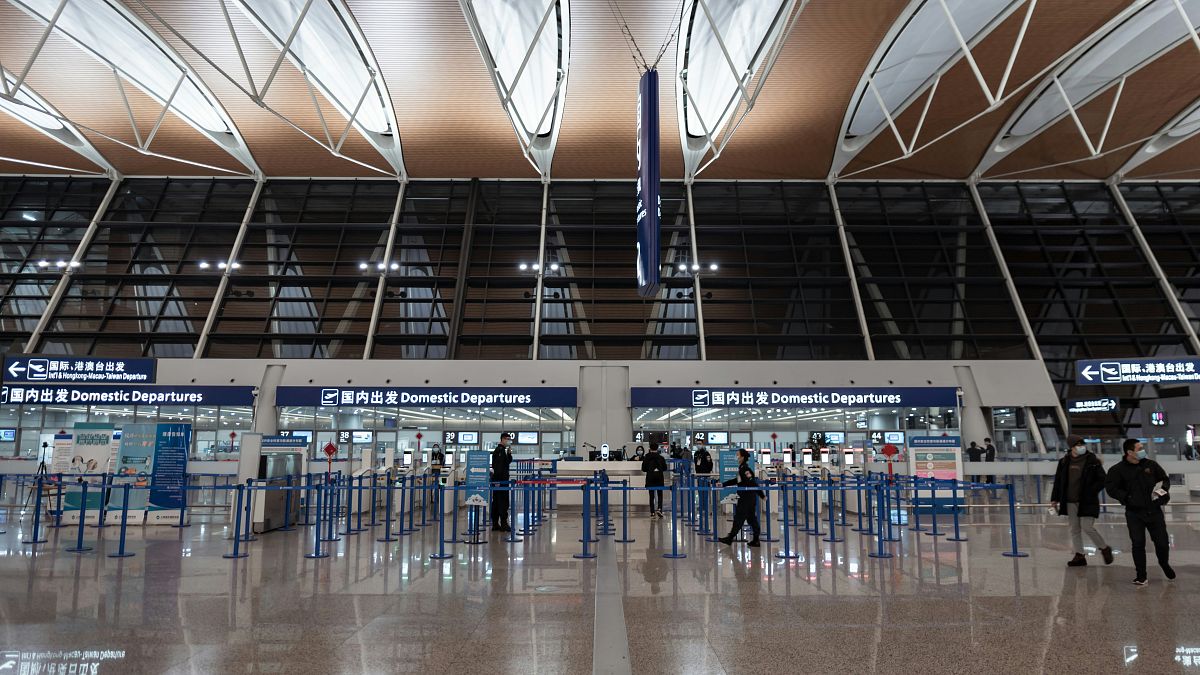What is FaceBoarding and which European airports are using it?

Airports in Italy are trialling new security and boarding technology that will mean passengers do not have to show their documents to get on a flight.
Dubbed ‘FaceBoarding’, the system uses facial recognition technology to allow travellers to pass through security checks and boarding gates rather than showing their passport, ID card or boarding pass.
Passengers need to register at kiosks in the airport or via an app to use the technology.
Here’s how the service works and which airports it is available in.
What is FaceBoarding?
FaceBoarding is a biometric system that allows passengers to access security controls and gates using facial recognition.
After they have checked in for the flight, travellers use airport kiosks to show their documents and scan their face. This then allows them to use FaceBoarding rather than showing their documents again.
An app is also being developed and hopes to launch in June so passengers can register their information in advance.
Passengers can decide whether to register for a single flight or for all flights until 31 December 2025.
Once registered, passengers can pass through designated gates at security and through boarding gates without showing proof of identity or a boarding pass.
FaceBoarding will reduce airport queues
The new system uses biometric recognition software designed by French IT company Thales and security gates from Swiss company Dormakaba.
It is hoped it will cut waiting times at security and boarding gates.
“In addition to offering faster control times, this increases effectiveness and guarantees protection of privacy and data of passengers,” SEA, the company that manages Milan’s Linate and Malpensa airports, said in a statement.
Which airports in Europe use FaceBoarding technology?
FaceBoarding is currently available for all passengers over 18 years old in two airports in Italy: Milano Linate and Catania.
Those who do not wish to use the system can access security and gates as usual using their identity document and boarding pass.
ITA Airways and Scandinavian Airlines (SAS) have both signed up to the system and it is also available to all other airlines.
Speaking at the launch at Linate, Armando Bruni, CEO of SEA which manages Milan’s Linate and Malpensa airports, said the company hopes to roll out the biometric technology in other airports too, including Malpensa.
Biometric checks will soon be in place in all European airports
Another type of biometric technology is also soon to be rolled out in airports across the EU.
The EU’s Entry/Exit System (EES) will be an automated registration system for UK and other non-EU travellers who don’t require a visa to enter the EU.
Travellers will need to scan their passports or other travel documents at a self-service kiosk each time they cross an EU external border. A facial scan will also be done.
The EES will not apply to legal residents or those with long-stay visas.
The system will register the traveller’s name, biometric data, and the date and place of entry and exit. Facial scans and fingerprint data will be retained for three years after each trip.
It will apply when entering all EU member states, apart from Cyprus and Ireland, as well as four non-EU countries in the Schengen Area: Iceland, Lichtenstein, Norway and Switzerland.
In April, a study by Co-op Insurance found that almost two thirds of UK adults are unaware of the EES.
The research has also found that more than one in five UK adults admit they would be ‘put off’ travelling to Europe as a result of the new system.
The system is set to launch on 6 October 2024.
Related
Brits forced to pay fee to visit these 30 countries…
UK tourists will be required to pay a fee to visit 30 countries in Europe under new European Union (EU) travel rules.The rules mean British holidaymakers will n
The beautiful European island with just 148 locals
Irakleia is a beautiful island in the Minor Cyclades of Greece, nestled in the heart of the Aegean Sea and just an hour away from Naxos. Officially recorded t
Warning issued for Brits flying easyJet and Ryanair to popular…
Passengers flying with Ryanair, easyJet and British Airways should expect disruption (Picture: Urbanandsport/NurPhoto via Getty Images) Passenge










